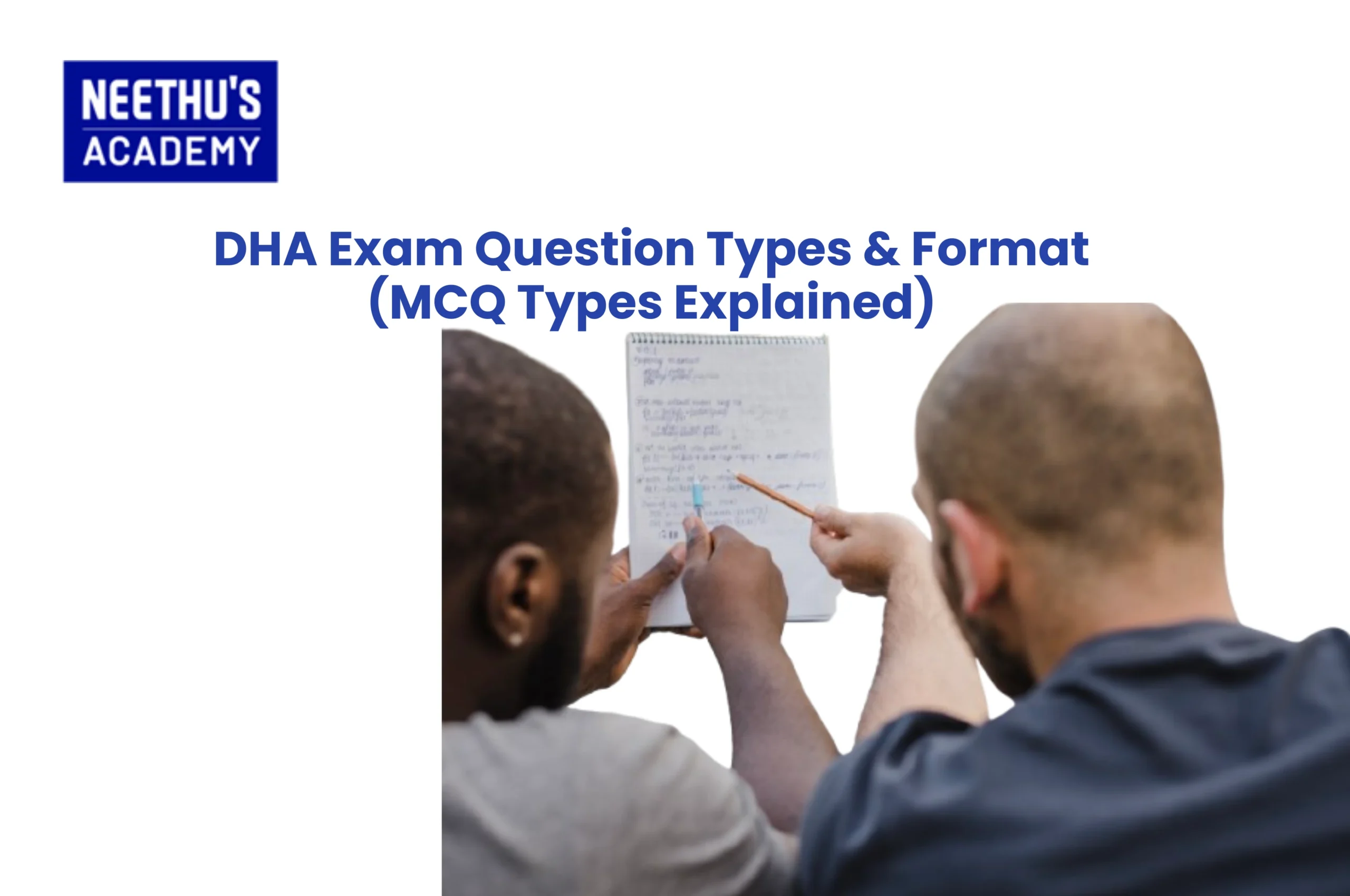The Occupational English Test is an entry pass for health care providers, including pharmacists, showing proof of proficiency in using English in…

OET Listening Preparation For Workplace Scenarios
The Occupational English Test (OET) is an important English language proficiency test devised especially for medical professionals wishing to work or study in English-speaking environments. Among the four sub-tests—Listening, Reading, Writing, and Speaking, the Listening sub-test is important as it tests your ability to understand spoken English used in the workplace and in clinical environments.
The OET Listening test is challenging for the majority of test-takers because it does not simply test general listening skills. Instead, it focuses on your ability to follow consultations, workplace instructions, and healthcare-related presentations. In this blog, we’ll dive deep into effective OET Listening strategies, necessary skills, common mistakes, and the importance of workplace-based preparation. This comprehensive guide will also serve as a valuable resource if you’re looking for OET coaching.
Understanding the Structure of OET Listening
OET Listening sub-test is approximately 40 minutes long and is comprised of three components:
Part A: Consultation Extracts
You will be listening to two consultations between a patient and a healthcare professional. Your job is to fill in notes based on certain information you hear. This part assesses your capacity to pick out detailed clinical information from a real-life conversation.
Part B: Short Workplace Extracts
You will hear six short recordings, for example, handovers, team briefings, or patient interactions. Each is followed by a multiple-choice question. This section tests your capacity to identify the purpose, gist, or detail in short, workplace-related conversations.
Part C: Presentation Extracts
You will be listening to two longer recordings, like interviews or talks on healthcare issues. These are followed by questionnaires in multiple-choice format. This section tests your ability to follow detailed information, like the viewpoint, rationale, and attitude of the speaker.
Having knowledge about the test structure allows you to approach each section seriously with a clear strategy, making you less anxious and accurate.
The Role of Workplace Situations in OET Listening
OETs are different from standard English tests such as IELTS or TOEFL in a single key respect: they deal only with healthcare communication. This means that you’ll be having conversations you might typically engage in at a hospital, clinic, pharmacy, or aged care facility.
The Listening sub-test will mirror real-life situations. You might hear a patient describe symptoms, a nurse give a handover, or a doctor describe a diagnosis. These are often filled with various accents, colloquialisms, and technical medical vocabulary. Familiarity with such workplace communication patterns is essential to success.
Additionally, good listening skills are not only for exam passing—strong listening skills are essential for actual communication with patients and colleagues. Excellence in this area ensures safe and effective clinical practice in English-speaking healthcare settings.
Key Listening Skills You Need to Master
To pass the OET Listening, candidates need to acquire a range of specialized listening skills. These include:
1. Predictive Listening
Before the audio starts, take a look at the questions and consider what type of information you require. This will help you prepare for what’s going to be said and keep you concentrating on the correct details.
2. Listening for Specific Information
Several questions, particularly in Part A, ask you to identify names, dates, symptoms, and treatments. Getting your ear used to picking up such details is crucial.
3. Understanding Paraphrasing
In the audio, information might not be conveyed using the same vocabulary as in questions. Building your skill in decoding paraphrased words can help you score great
4. Note-taking and Writing Skills
In Part A, you are required to write short answers after listening. Note-taking while maintaining focus on the audio is an essential skill.
5. Familiarity with Accents
OET audios have a variety of accents—British, Australian, American, etc. Exposure to different English accents beforehand exposes you to this diversity.
Strategies to Enhance OET Listening Performance
A good preparation plan coupled with the right strategies can improve your score significantly. Try to include these techniques in your study schedule:
- Utilize the pre-recording time to read the questions slowly and pick out keywords.
- Listen actively instead of passively. Concentrate on grasping meaning, not merely listening to words.
- Listen to the tone and attitude of the speaker, especially in Part C.
- Make a habit of listening to medical podcasts and medical videos to get accustomed to the most commonly used vocabulary and speech patterns.
- Check your answers and think about any errors you make on practice tests.
Regular use of these strategies will bring steady improvement and growing confidence.
Mistakes to Avoid
While preparing for the OET Listening sub-test, most candidates fall into the same traps. Knowing these can help you avoid them:
- Taking too long on a single question and losing the next answer.
- Writing answers in the wrong or incomplete format, e.g., misspelling or using extra words.
- Not paying attention to differences in British vs. American English spelling or pronunciation.
- Being distracted by unfamiliar words rather than concentrating on the overall meaning.
- Failing to use the reading time wisely to scan questions.
Focusing on these areas during your early preparation can help avoid losing scores in the actual exam.
Useful Materials for Listening Practice
There are plenty of good quality materials you can use to practice for the Listening sub-test. Some safe bets are listed below:
- The OET website offers free sample tests and paid material for professionals.
- YouTube channels such as E2 OET and OET Online offer useful tutorials and practice sessions.
- Medical podcasts such as “The Clinical Problem Solvers” or “BMJ Podcast” can help you get used to natural medical conversation.
- Hearing full-length mock tests in test conditions is an excellent means of building up listening stamina and speed.
- Picking the appropriate combination of practice materials means you are being subjected to a wide variety of situations and question types.
Best OET Coaching Centre in Kerala
While self-study is possible, many candidates benefit from structured coaching. A professional OET coaching centre provides personalized attention, expert feedback, and regular assessments.
Neethu’s Academy is among the best OET coaching centers in Kerala. Focusing on healthcare-specific English training, the academy offers profession-based coaching, mock test simulation, and practical training for all four sub-tests. This can greatly boost your chances of getting a B grade or better on your initial attempt.
Final Tips for OET Listening Success
The following are some final tips to optimize your performance:
- Practice listening daily, even for only 15 minutes.
- Listen to audio transcripts after every practice session to know what you missed.
- Record yourself summarizing what you hear to enhance retention and clarity.
- Join a study group or online forum to share information and resources.
- Stay relaxed and focused during the test—don’t stress about questions you think you got wrong.
Conclusion
OET Listening sub-test is a vital part of your journey to a healthcare professional career in an English-speaking country. Preparing for it takes more than just listening to sound clips in English. It’s learning the art of reading workplace dialogue, medical terminology, and different accents while being accurate and composed under pressure.
With the right strategies, good practice material, and perhaps investing in a professional coaching program, you can tackle the test confidently and achieve the outcomes you desire.
Start early, be consistent, and remember—good listening skills are not just for tests, but also for real patient care and professional communication.
Frequently Asked Questions
Practice daily with authentic OET audio materials, make note-taking your top priority, and build confidence with healthcare scenarios.
Work towards regular scores in practice tests, improve your focus, and go over errors to identify weak spots.
It’s tough because of rapid conversations, foreign accents, and the necessity to grasp clinical information under pressure of time.
The OET Listening test takes about 40 minutes, including reading questions and transferring answers.
Related Blogs
- All Posts
- OET
Among the several components of the OET, the Speaking sub-test is crucial and evaluates your proficiency not only in language but also…
Preparing for the Occupational English Test (OET) can be a game-changer for nurses aiming to advance their careers globally. At Neethu’s Academy,…
Course Enquiry
Latest Posts
- All Posts
- canada
- CBT
- DELF
- DHA
- French
- GENERAL
- German
- Haad
- IELTS
- IQN NEW ZEALAND
- MOH
- NCLEX-RN
- NHRA
- OET
- OSCE
- Pearson Vue
- PROMETRIC
- PTE
- TOEFL
- Back
- NCLEX - NGN
- Back
- OET FOR PHYSIOTHERAPIST
- OET FOR PHARMACIST
- OET FOR DOCTORS



